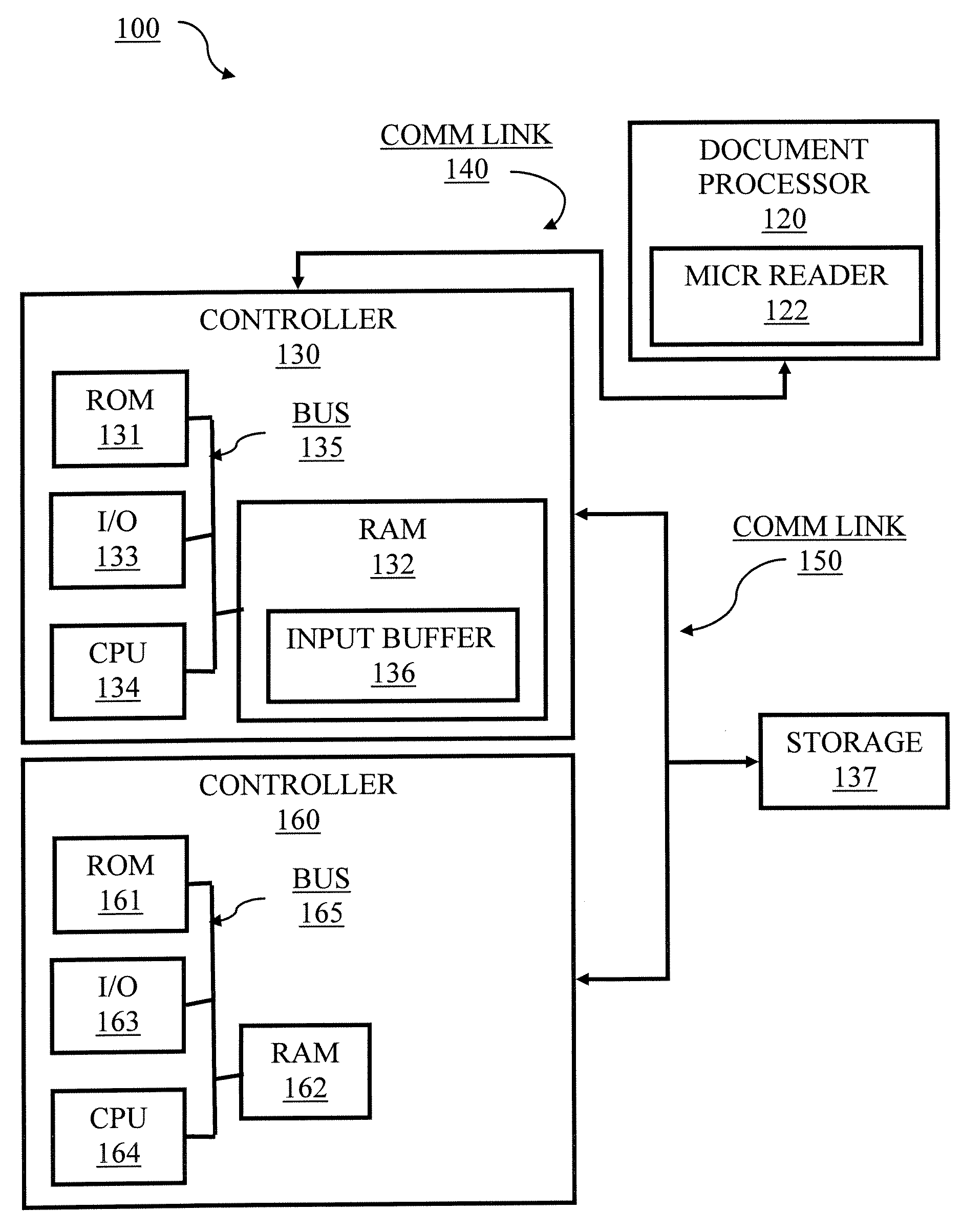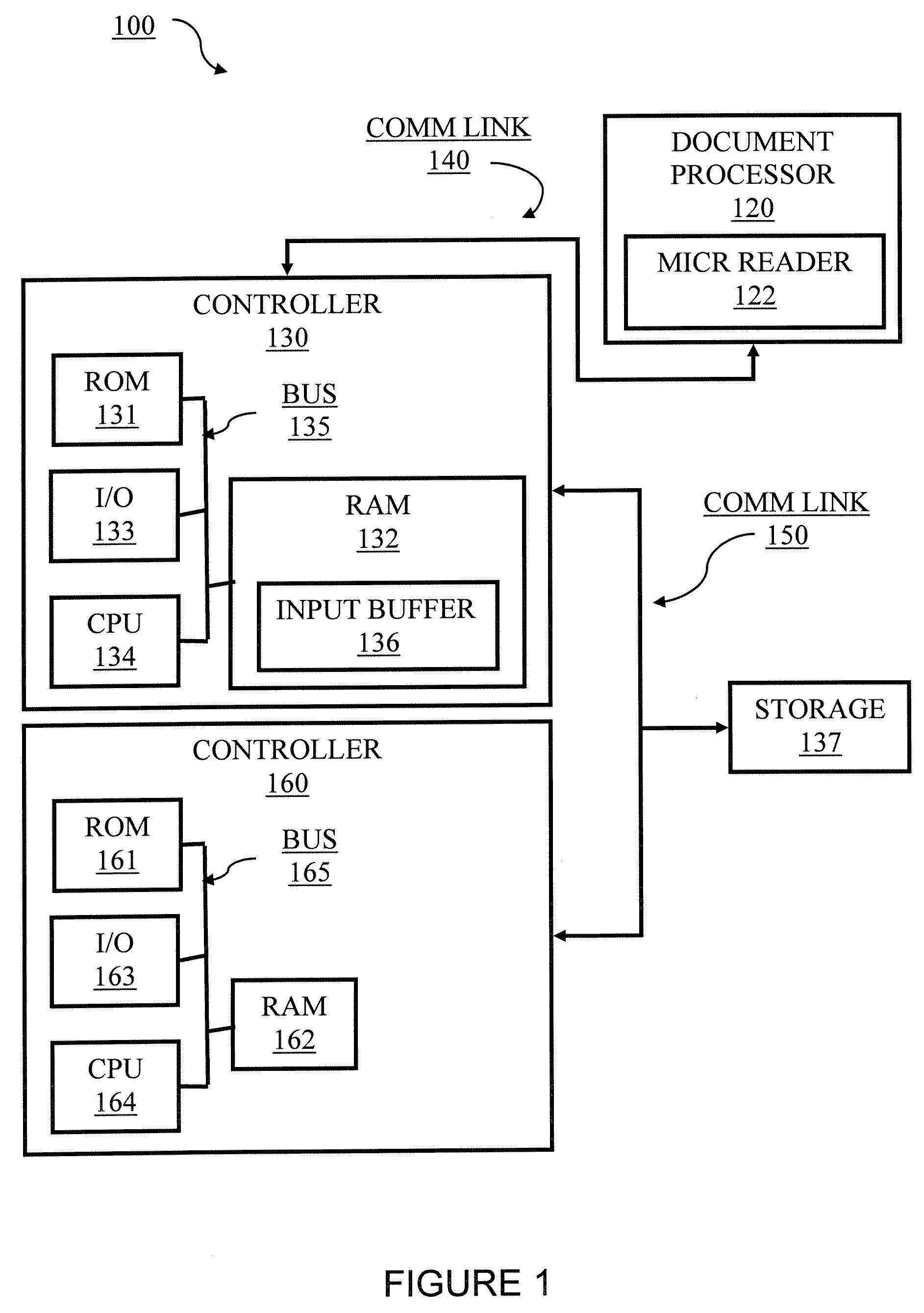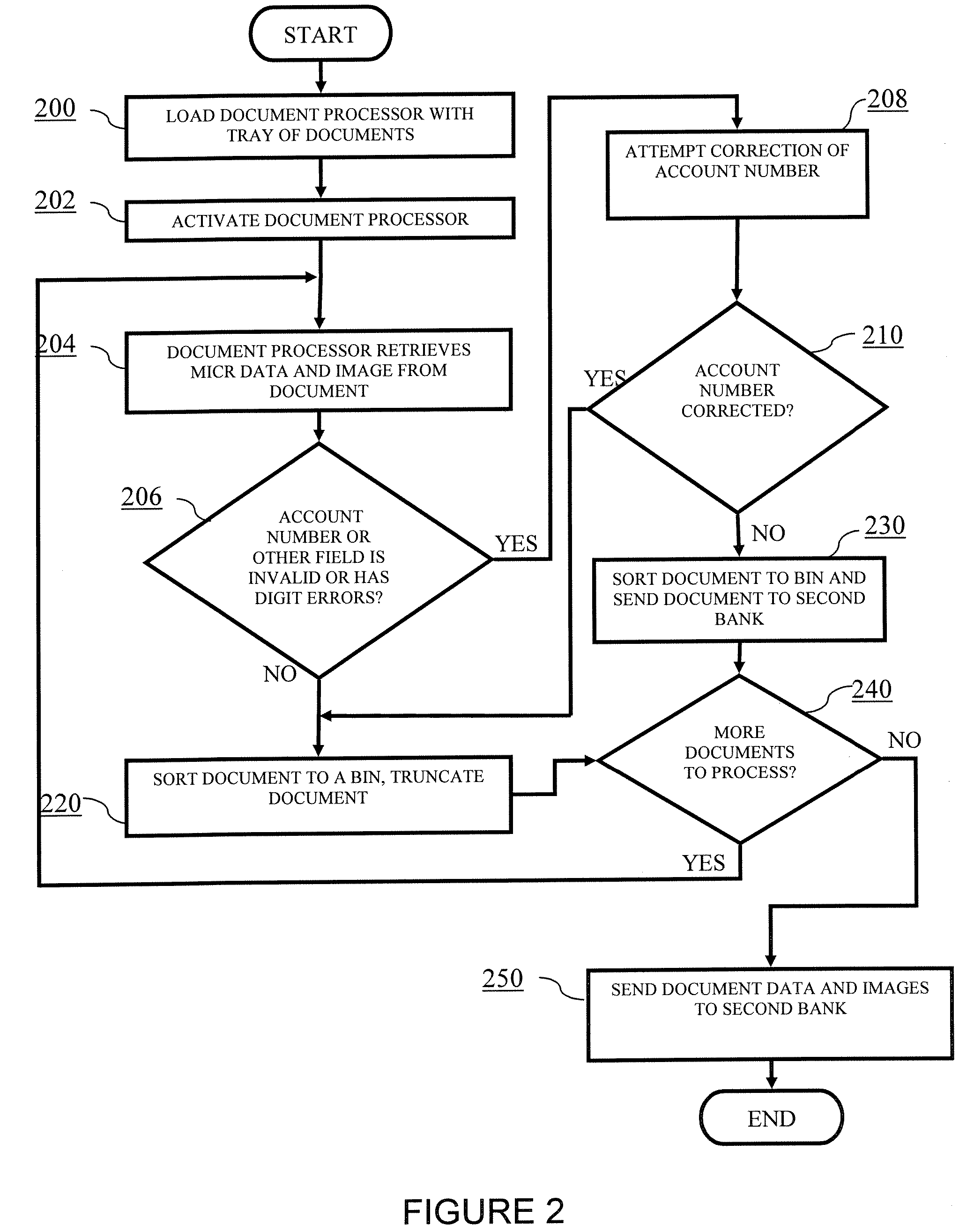Image exchange without full micr qualification
a technology of image exchange and micr qualification, applied in the field of automatic financial transactions, can solve the problems of putting the executor's bank statement every month in envelopes, the process of gathering and compiling every, and the cost of obtaining the bank statement, so as to improve the image exchange process
- Summary
- Abstract
- Description
- Claims
- Application Information
AI Technical Summary
Benefits of technology
Problems solved by technology
Method used
Image
Examples
example 1
Correcting Bank Routing Number at BOFD Followed by Standard ANSI X9.37 Handling
[0059] A computer system at the bank of first deposit (BOFD) of the check scans each check electronically, reads the MICR data, and also takes an electronic picture or image of each check itself. The MICR data on checks includes several fields, including (1) amount of the check, (2) process control field, (3) account number, (4) optional field 4, (5) bank routing number, (6) optional field 6, and (7) serial number. Some of these numbers are optional and therefore are not on every check. If these numbers are on the check, however, then under the ANSI X9.37 standard as required by Check 21, they must be supplied in the X9.37 data file that is transmitted to the second or receiving bank.
[0060] Once the computer system at the BOFD has scanned the data, it determines whether it has a complete set of all MICR data on the check. Some of the data, such as the check amount, may be entered by hand, or determined ...
example 2
Not Correcting MICR Data at BOFD and Transmitting the Uncorrected MICR Data to the Second Bank for Later Error Correction
[0066] In this configuration, the BOFD scans the check as described above and determines that there are unreadable or missing characters in the other MICR fields of the check other than the bank routing number and the amount of the check. The computer system at the BOFD creates an ANSI X9.37 file or record of the check that was scanned that is missing one or more characters (i.e., one or more MICR characters are unreadable by the check scanner at the BOFD) in one or more of the account number, serial number, process control field, optional field 4, or optional field 6 fields.
[0067] Since the amount and the bank routing number are readable, the computer system at the BOFD knows how much the check is for and to which bank the check should be tendered. The X9.37 standard, however, requires that all of the MICR fields be determined at the BOFD before transmitting th...
example 3
Correcting Errors Both at the BOFD and at the Second Bank
[0071] Finally, it should be clear that both of the above-described error correction processes can be (but do not have to be) performed on any check. For example, the BOFD can correct the bank routing number, leave at least one of the other MICR data fields uncorrected (assuming the check scanner was unable to read them), and transmit this incomplete ANSI X9.37 record to the second bank for further error correction to determine one of the other MICR fields other than the bank routing number and amount fields. Each check that is processed may therefore be corrected at least twice: once at the BOFD, and once at the second bank. Further, it should be clear that any one or all of the MICR fields on the check can have unreadable characters that can be subsequently corrected by either the BOFD or the second bank. Indeed, every single MICR field could have a missing or unreadable character, and the system described above would be ab...
PUM
 Login to View More
Login to View More Abstract
Description
Claims
Application Information
 Login to View More
Login to View More - R&D
- Intellectual Property
- Life Sciences
- Materials
- Tech Scout
- Unparalleled Data Quality
- Higher Quality Content
- 60% Fewer Hallucinations
Browse by: Latest US Patents, China's latest patents, Technical Efficacy Thesaurus, Application Domain, Technology Topic, Popular Technical Reports.
© 2025 PatSnap. All rights reserved.Legal|Privacy policy|Modern Slavery Act Transparency Statement|Sitemap|About US| Contact US: help@patsnap.com



